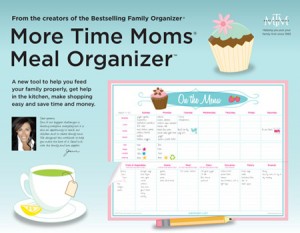How to Meal Plan and Save Money.
 Spend half an hour meal planning for the week and you will shrink your food bill, feed your family healthier meals, save time and reduce meal time stress.
Spend half an hour meal planning for the week and you will shrink your food bill, feed your family healthier meals, save time and reduce meal time stress.
Here are a few tips to get you started.
Set aside a regular time to do meal planning. Layout your meal planner and grocery list, any cookbooks or magazines you like and your laptop to access your favorite food sites for recipes and dinner ideas.
Think about your week and note any special things that may affect a certain day. Do you have guests coming, an evening activity/meeting, does your family always have a pizza night? Note any commitment that will impact how long you have to prepare, serve, or eat the meal.
Decide what to prepare. Make sure there is variety. Plan different types of meals throughout the week, for example: 3 meat nights, 1 vegetarian, 1 pasta, 1 pizza night, 1 leftover.
Plan your menu around seasonal produce. Think about what’s in season and which ingredients are at their best. You will eat better and save money because food that is in season is plentiful and more economical.
Note where the recipe is as you write down the menu for each day. This will allow a helper to start the dinner, if the cook is delayed. Use the back pocket of the planner for your recipe cards and coupons.
Write out your grocery list while you plan your menu. Check the pantry for items that you will need before you head off to the grocery store. Add errands to the list to minimize the time you spend running around.
Look for efficiency opportunities. Think about getting two meals from the effort of one. Cook extra meat and use it in the next meal (Roast chicken today is chicken Caesar salad tomorrow) or double the recipe and freeze half for another dinner.
Plan a Leftover day. Take all the leftover containers out of the fridge, line them up on the counter and let the family pick what they want. This is key because you reduce food waste, clean out the refrigerator and it’s a night off for the chef.
Save one day a week for a new dish. Try a new recipe from a cookbook or a food blog. Pick a day where you have extra time and won’t feel rushed.
Get the family involved. Use the chore list to assign tasks based on interest and abilities. We sometimes rotate kitchen duties or people gravitate to specific interests, for example; one son likes to help prep and the other prefers to make lunches. Use star stickers to motivate your kids.
Save your menu plans. So that you can tweak them and reuse them, making your planning even more streamline and efficient. Put a star on your family’s favorite recipes.
Leave a Reply
Want to join the discussion?Feel free to contribute!